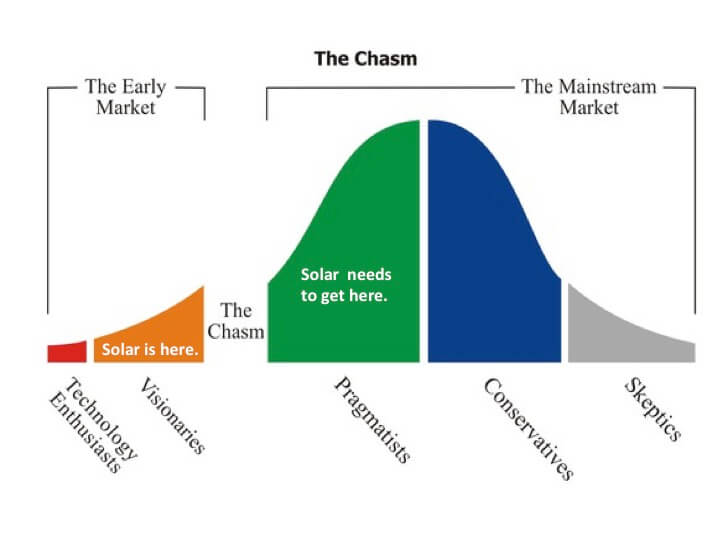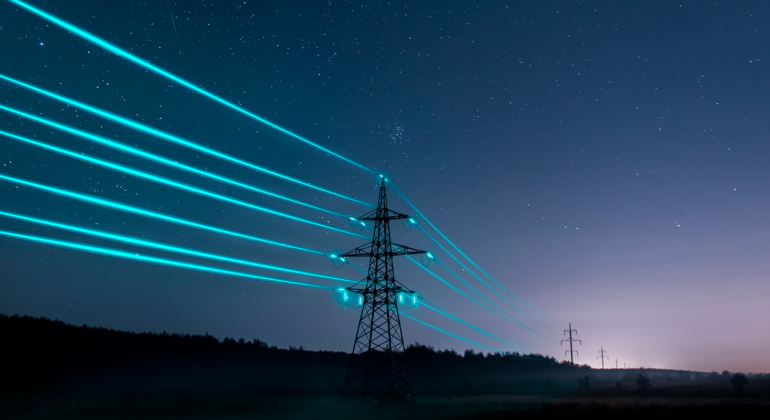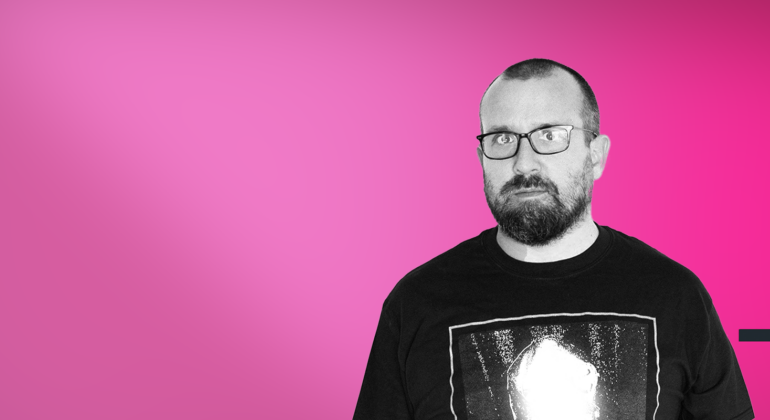 When will solar become a mainstream energy source? It’s a great question, so Kiterocket brought together five solar industry veterans to discuss it at “Solar Crossing the Chasm,” an off-site Intersolar North America 2016 panel session based on Geoffrey Moore’s best-selling high-tech marketing book, Crossing the Chasm.
When will solar become a mainstream energy source? It’s a great question, so Kiterocket brought together five solar industry veterans to discuss it at “Solar Crossing the Chasm,” an off-site Intersolar North America 2016 panel session based on Geoffrey Moore’s best-selling high-tech marketing book, Crossing the Chasm.
Our panelists were Bernadette Del Chiaro, executive director of CALSEIA; Barry Cinnamon, founder of residential solar company Cinnamon Solar and racking company Spice Solar; Danny Kennedy, co-founder of Sungevity and current director of California Clean Energy Fund; Jeff Wolfe, co-founder of groSolar and current senior VP of business strategy at Just Energy; and me, Tor “Solar Fred” Valenza, CMO of Solar at Kiterocket.
In Geoffrey Moore’s paradigm, there are four basic technology adoption stages: Early Adopters, Early Majority, Late Majority, and the Laggards. At less than 2% of the U.S. grid, solar is clearly still in the Early Adoption stage. But with record installations, it’s getting closer to begin the leap to “cross the chasm” into the Early Majority segment.
The Early Majority segment is made up of pragmatists, who are somewhat demanding when it comes to the adoption of new technologies like solar and batteries. These pragmatists want the solar technology, policies, and economics to be stable and without risks before purchasing. From a marketing perspective, they also want to see that they’re not the first kids on the block to go solar. They would rather be the fifth or sixth people on the block to go solar, but not the last.
Getting to this Early Majority stage is the most challenging part of the adoption curve, according to Moore. He calls it “the Chasm.”
Our panelists explored how the solar industry will cross the chasm from a variety of perspectives—financial, public policy, marketing, and technology. The individual conclusions were quite diverse, with agreement and disagreement about solar’s current state of being mainstream. You can see the full video above (we apologize for the wind noise), but here are some key takeaways:
- With installed solar pricing heading to $1 per watt and utilities increasingly selecting solar for new generation capacity, the panelists agreed that utility-scale solar was already well on its way to crossing the chasm to becoming a mainstream generation source.
- Renewable portfolio standard (RPS) and investment tax credit (ITC) policies have had a positive effect on utilities moving across the chasm.
- Wolfe said that the pragmatists are still missing Internet of Things (IoT) technology to help them cross the chasm. The panelists believe that today’s solar PV technology is already stable and affordable—and that it works well as is.
- Kennedy noted a large gap in “social proof.”
- Del Chiaro pointed out that while large utility territories have somewhat stable net metering (NEM) policies in California, policies for distributed energy are not stable for the 20 small municipal territories. The possibility of many “Nevada-style” NEM rollbacks still exists.
- Wolfe said that consumers want energy services, not necessarily “solar.” I disagreed, countering that companies should not abandon the “solar brand” and become just another energy company that happens to sell clean solar kilowatt-hours and energy services.
- Kennedy and Cinnamon discussed how solar has many micro-communities, and because of that, we have many different kinds of chasms to cross in different areas. At the same time, for dense solar adoption areas like San Jose, Cinnamon suggested that residential solar had already crossed the chasm into the Early Majority.
- Kennedy made this point several times: solar installers must deliver personalized messaging to their target customers. That is, residential solar marketers have to deliver the right message at the right time in the right place, every time. There is no universal message or educational material that will make every prospect care, but consistent messaging informed by data will certainly help close the chasm more often than not.
There are many more takeaways from the panel, but if you fast forward to the 43:50 mark, you’ll see the panelists define what it means for solar to become “mainstream” and when they believe it will happen.
Finally, don’t be shy—we want your feedback. The Solar Marketing Think Tank invites you, the readers, to comment about your own definition of “mainstream” and when you believe the different U.S. solar sectors will be crossing the proverbial chasm.
Tor “Solar Fred” Valenza is the chief marketing officer of solar at Kiterocket. Follow him on Twitter at @SolarFred and @Solar_ThinkTank.


